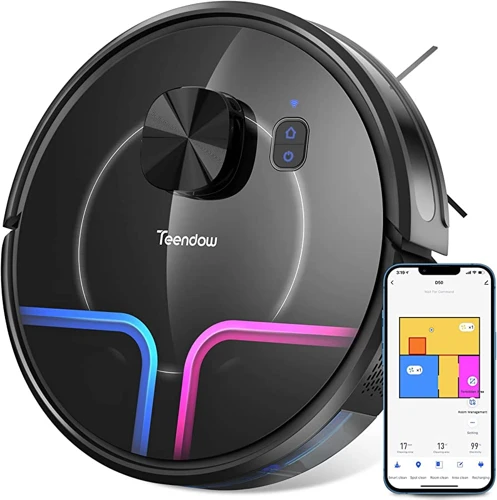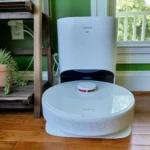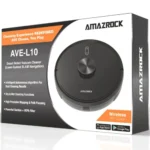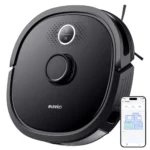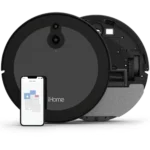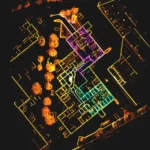As technology continues to advance, the invention of smart vacuum cleaners has become a game-changer in the cleaning industry. These devices not only make cleaning easier, but they have also revolutionized the way we think about home cleaning. One of the key technological advancements that set these devices apart is their use of SLAM technology. But what exactly is SLAM, and how do smart vacuum cleaners use it to navigate in the dark and avoid obstacles? In this article, we’ll delve into the intricacies of smart vacuum cleaners, explaining how these devices work and how they can optimize your cleaning experience.
What is SLAM Technology?
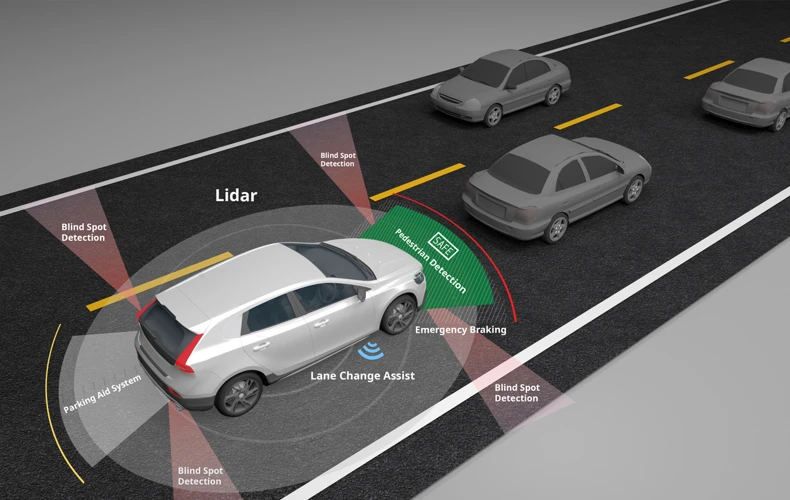
SLAM technology is at the core of how smart vacuum cleaners operate, allowing them to navigate and clean effectively without human intervention. But what exactly is SLAM technology and how does it work in smart vacuums? Understanding this technology is key to optimizing your cleaning experience. To find out more about SLAM technology and its role in smart vacuums, keep reading or check out our detailed guide on SLAM in smart vacuums.
How do Smart Vacuum Cleaners use SLAM Technology?
Smart Vacuum Cleaners with SLAM technology use a complex system of sensors, mapping, and algorithms to create a virtual map of their surroundings and navigate around obstacles. The following table shows the various components that work together to make smart vacuum cleaners efficient and effective:
| Sensor Type | Function |
|---|---|
| LiDAR | Uses lasers to scan the environment and create a 360-degree map of the room |
| Time-of-flight (ToF) | Measures the time it takes for light to bounce back and create a 3D map |
| Optical Sensors | Track the robot’s movement and path as it cleans |
| Gyroscopes and Accelerometers | Collect data on the robot’s movement and orientation |
With the data collected from these sensors, the smart vacuum cleaner creates a map of the room and identifies obstacles such as furniture, walls, and other objects. The vacuum then uses algorithms to calculate the most efficient cleaning path while avoiding obstacles.
SLAM technology also allows the vacuum to adapt to its environment in real-time, which means that if furniture is moved or added to the room, the vacuum will adjust accordingly.
By using SLAM technology, smart vacuum cleaners can clean a room more efficiently and effectively, as they are able to navigate around obstacles without getting stuck or damaging furniture. Additionally, this technology allows the vacuum to remember the layout of the room for future cleaning sessions.
If you want to learn more about the benefits of using Smart Vacuum Cleaners with SLAM Technology, check out our detailed article about the topic.
What are the benefits of using Smart Vacuum Cleaners with SLAM Technology?
Using Smart Vacuum Cleaners with SLAM technology can bring a range of benefits to your cleaning routine. These benefits include:
- Efficiency: Smart vacuum cleaners with SLAM technology are highly efficient in cleaning your home. They can map and navigate through your rooms with speed and accuracy, ensuring every nook and cranny is covered. This means you can spend less time cleaning and more time doing the things you love!
- Convenience: With a Smart Vacuum Cleaner, you don’t need to manually move it around from room to room. Its advanced mapping and navigation technology allows it to do the cleaning for you, autonomously. Additionally, some Smart Vacuum Cleaners can be controlled through a smartphone app or voice assistants like Amazon Alexa and Google Assistant, giving you even more control and convenience.
- Peace of mind: When you use a Smart Vacuum Cleaner with SLAM technology, you can trust that your floors will be cleaned thoroughly and efficiently. Its advanced sensors and obstacle detection technology help prevent it from falling down stairs and getting stuck in tight corners. Plus, you won’t have to worry about coming home to a dirty house.
- Futuristic experience: Smart Vacuum Cleaners with SLAM technology bring futuristic experience to your home. Their advanced mapping and navigation technology make them seem like they are from a science fiction movie. Plus, their sleek and modern design will add a touch of style to your home.
With all of these great benefits, it’s no wonder that Smart Vacuum Cleaners with SLAM technology are becoming increasingly popular. If you’re interested in learning more about this exciting technology, check out our article on SLAM Technology for Smart Vacuum Cleaners.
How do Smart Vacuum Cleaners avoid obstacles?

Navigating through a cluttered room can be a challenge even for humans, but for smart vacuum cleaners with SLAM technology, it’s a breeze. These innovative devices are equipped with advanced algorithms, sensors, and mapping capabilities that ensure effective movement and obstacle avoidance. In this section, we’ll explore how these robotic cleaners avoid obstacles, including the use of sensors and mapping, obstacle detection and avoidance, as well as virtual barriers. Understanding how these machines work will guarantee optimal performance and longevity. So let’s dive in! And if you want to learn more about SLAM technology and its role in smart vacuum cleaners, check out our article on SLAM vs. Traditional Mapping for Smart Vacuum Cleaners.
Sensors and Mapping
Smart Vacuum Cleaners with SLAM Technology use a combination of sensors and mapping to navigate and avoid obstacles. SLAM stands for Simultaneous Localization And Mapping, and it allows the vacuum to create a map of the space it is cleaning while also identifying its own location within that space.
Sensors are a crucial part of SLAM Technology. Smart Vacuum Cleaners often use a combination of sensors, such as lasers, cameras, and physical bumpers. These sensors collect data about the environment, including the location of walls, furniture, and other obstacles.
Once the sensors have collected this information, the Smart Vacuum Cleaner uses advanced algorithms to construct a map of the space. This map allows the vacuum to understand the layout of the room and the location of obstacles. By comparing its current location to its internal map, the Smart Vacuum Cleaner can identify where it is in the room and determine the best path to take.
SLAM Technology is constantly evolving, and there are already future advancements on the horizon. Some companies are exploring the use of 3D cameras and machine learning algorithms, which could provide even more detailed maps and improve the vacuum’s ability to identify and avoid obstacles.
However, even with advanced technology in place, there may be situations where obstacles still pose a challenge for Smart Vacuum Cleaners with SLAM Technology. In these cases, there are troubleshooting tips available to help work through any issues that may arise.
Obstacle Detection and Avoidance
Smart vacuum cleaners with SLAM technology are equipped with sensors that help them detect and avoid obstacles while cleaning. These obstacles include furniture, appliances, and other household items that may be in the vacuum’s path. Obstacle detection and avoidance is an important function, as it ensures that the vacuum cleaner can move around freely without getting stuck or causing damage to the items around it.
One type of sensor used for obstacle detection is the bumper sensor which is located on the front of the vacuum. When the bumper sensor detects an obstacle, the vacuum pauses and changes direction to avoid it. Another type of sensor used is the infrared sensor which helps the vacuum detect obstacles in poorly lit environments such as dark rooms or under furniture.
The table below summarizes the different sensors used for obstacle detection and avoidance in smart vacuum cleaners with SLAM technology:
| Sensor | Function |
|---|---|
| Bumper Sensor | Detects obstacles and changes direction to avoid them |
| Infrared Sensor | Helps detect obstacles in poorly lit environments such as dark rooms or under furniture |
In addition to sensors, smart vacuum cleaners use advanced algorithms to navigate around obstacles. The vacuum creates a map of the environment as it cleans, which allows it to plan its path and avoid obstacles more efficiently. This is why it’s important to give the vacuum enough space to move around, as it needs to be able to see and navigate the room effectively.
By using a combination of sensors and advanced algorithms, smart vacuum cleaners with SLAM technology can effectively detect and avoid obstacles while cleaning. This ensures that your home is cleaned thoroughly without damaging your furniture or causing the vacuum to get stuck.
Virtual Barriers
Smart vacuum cleaners with SLAM technology are designed to navigate through your home autonomously, while avoiding obstacles effectively. Another way that these devices ensure optimum efficiency is through the use of virtual barriers.
Virtual barriers are invisible barriers that prevent a smart vacuum cleaner from entering certain areas of your home. These barriers can easily be created using either the mobile app or through voice activation, designating areas that the smart device should steer clear of. This is especially useful if there are certain areas in your home that you don’t want the device to clean, or if you don’t want it to get stuck in cluttered or messy sections.
Virtual barriers utilize the same kind of sensors as those designed to map and navigate spaces, including infrared sensors, laser sensors, and cameras. In the case of virtual barriers, the sensors are equipped to detect and interpret virtual boundaries instead of physical ones.
When it comes to setting up virtual barriers for your smart vacuum cleaner, there are a few things to keep in mind. For instance, make sure to place the barriers in areas that are easily distinguishable, so as to avoid any confusion when the device is navigating your home. This can be especially important in dimly lit rooms, where the device’s sensors may be less effective and more prone to mistake virtual barriers for something else.
Additionally, it’s important to note that virtual barriers may not always be foolproof. The device’s sensors can be affected if they’re undergoing regular maintenance or if the device’s battery is running low.
Virtual barriers add an additional layer of flexibility and control to the smart vacuum cleaner’s navigation abilities, making it an intelligent and efficient tool for cleaning your home.
How do Smart Vacuum Cleaners navigate in the dark?
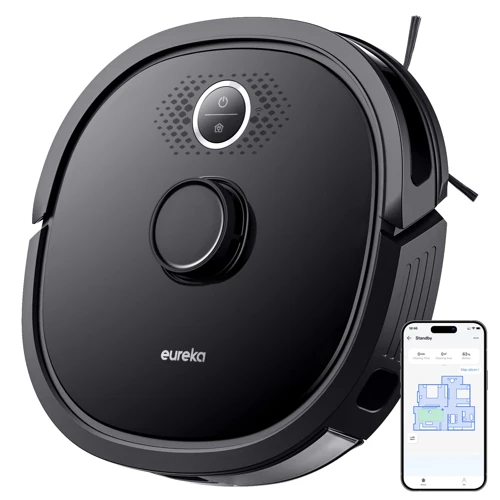
When the lights go off and your home is plunged into darkness, your Smart Vacuum Cleaner with SLAM technology continues to work its magic. But how does it navigate through its designated cleaning area without any visual cues? The answer lies in the advanced technology and sensors that exist within your smart vacuum cleaner. In this section, we’ll delve into the methods that allow Smart Vacuum Cleaners to navigate complex and unfamiliar environments without any assistance from lights or other visual aids.
Infrared Sensors
One of the ways smart vacuum cleaners with SLAM technology navigate in the dark is through the use of infrared sensors. These sensors emit an infrared light that bounces off nearby objects and returns to the vacuum cleaner’s sensor. By measuring the time it takes for the light to return, the vacuum cleaner can determine the distance to the object.
Infrared sensors are particularly useful because they can detect objects even in low light or complete darkness. This means that smart vacuum cleaners equipped with infrared sensors can operate effectively at any time of day, without needing additional lighting.
But infrared sensors are not foolproof. Some materials, such as black rubber, absorb infrared light and appear invisible to the sensors. Similarly, glass and reflective surfaces can reflect the infrared light in unexpected ways, leading to inaccurate readings.
To overcome these challenges, smart vacuum cleaners with SLAM technology typically use an array of sensors, including infrared sensors, to build a comprehensive map of the environment. By combining data from multiple sensors, the vacuum cleaner can more accurately detect and avoid obstacles, even in the dark.
Here is a table summarizing the pros and cons of using infrared sensors:
| Pros | Cons |
|---|---|
| Effective in low light or complete darkness | Some materials absorb infrared light and are difficult to detect |
| Can detect objects at a distance | Glass and reflective surfaces can reflect infrared light in unexpected ways |
| Can be used to build a comprehensive map of the environment |
While infrared sensors are just one part of the complex system that allows smart vacuum cleaners to operate effectively, they are a critical component for navigating in the dark. By combining infrared sensors with other sensors, mapping, and advanced algorithms, smart vacuum cleaners can clean more efficiently and effectively than ever before.
Mapping
Mapping is a crucial part of how smart vacuum cleaners with SLAM technology are able to navigate in the dark. It involves creating a detailed map of the home environment, which the vacuum cleaner can then use as a reference to navigate efficiently and avoid obstacles.
What is Mapping?
In simple terms, mapping involves creating a detailed digital representation of the home environment that the smart vacuum cleaner can use to navigate. This digital map is created using a range of sensors, including LIDAR, infrared sensors, and cameras, which work together to create a 3D model of the environment.
How do Smart Vacuum Cleaners use Mapping to Navigate in the Dark?
Once the smart vacuum cleaner has created a detailed map of the home environment, it can then use this map to navigate in the dark. The vacuum cleaner uses its onboard sensors to locate itself in real-time, and then uses the map to plan out the most efficient route through the home. As the vacuum cleaner moves through the environment, it updates the map with new information about obstacles and other features.
Benefits of Mapping for Smart Vacuum Cleaners
Mapping is an essential technology for smart vacuum cleaners, as it allows them to operate effectively in low-light or dark environments. By creating a detailed map of the home environment, the vacuum cleaner is able to navigate efficiently and avoid obstacles, even in complete darkness. This not only saves time but also minimizes the risk of collisions or other accidents, protecting both the vacuum cleaner and the home’s occupants.
Mapping is a key technology that allows smart vacuum cleaners to operate effectively in any environment. By creating a detailed map of the home environment, these devices are able to navigate more efficiently and avoid obstacles, even in complete darkness. This technology, combined with advanced algorithms and sensor technology, makes smart vacuum cleaners with SLAM technology a game-changer for home cleaning.
Advanced Algorithms
Smart vacuum cleaners with SLAM technology also use advanced algorithms to navigate in the dark. These algorithms help the device to make intelligent decisions about how to move within the home.
Algorithm Type | Function
— | —
Optical Flow | Detects changes in pixel values and uses this information to determine movement in the environment. Optical flow algorithms allow smart vacuum cleaners to determine how to move based on visual data.
Simultaneous Localization and Mapping (SLAM) | Uses input from sensors and cameras to create a map of the environment. This map is constantly updated by the device as it moves, which allows the smart vacuum cleaner to navigate in the dark even if it cannot see the environment clearly.
Particle Filters | A type of algorithm that uses mathematical models to estimate the position of the device based on sensory data. This allows smart vacuum cleaners to understand their environment more precisely, and make decisions about how to navigate in the dark with greater confidence.
Probabilistic Robotics | A holistic approach that combines information from multiple sensors to form a more accurate understanding of the device’s environment. The use of advanced probabilistic algorithms helps smart vacuum cleaners navigate in the dark with greater accuracy than basic image recognition or optical flow algorithms.
The use of advanced algorithms allows smart vacuum cleaners to efficiently navigate in the dark even in complex home environments. These algorithms allow the device to better interpret its sensor data and make decisions about where to move and how to avoid obstacles. This helps smart vacuum cleaners to maximize their cleaning performance and minimize the risk of accidents or collisions.
Tips for optimizing your Smart Vacuum Cleaning experience
So, you invested in a smart vacuum cleaner with SLAM technology and it has been keeping your floors clean and tidy, saving you time and effort. However, if you want to optimize your cleaning experience even further, there are a few tips and tricks you can follow. In this section, we will explore some strategies that will help you get the most out of your smart vacuum cleaner. These tips include regular cleaning and maintenance, optimizing sensor placement and usage, and creating an ideal home environment for your smart vacuum cleaner. Keep reading to learn about how you can ensure your smart vacuum cleaner works at its best!
Regular Cleaning and Maintenance
Keeping your Smart Vacuum Cleaner well-maintained is essential for ensuring its longevity and optimal performance. Here are some tips that will help you with regular cleaning and maintenance.
Empty the Dustbin Frequently: One of the most important things that you can do for your Smart Vacuum Cleaner is to empty the dustbin regularly. A full dustbin can impede the vacuum’s suction power, making it less effective. Empty the dustbin after every use, and wash it with warm, soapy water to keep it clean.
Clean the Brush Roll: Over time, hair, dust and debris can get trapped around the brush roll, making it less effective. Use a pair of scissors to cut away any tangled hair, and then clean the brush roll with a damp cloth.
Change Filters: Filters play a crucial role in keeping the air in your home clean. They trap dust and allergens, preventing them from being circulated back into the air. It’s important to change the filters regularly to ensure that they’re working effectively.
Check for Wear and Tear: Regularly inspect your Smart Vacuum Cleaner for signs of wear and tear, including damage to the wheels, brushes or sensors. If you notice anything that may affect the vacuum’s performance, it’s essential to get it repaired as soon as possible.
Store in a Dry Place: Finally, to ensure that your Smart Vacuum Cleaner lasts as long as possible, it’s crucial to store it in a dry place when you’re not using it. Avoid storing it in areas with high humidity or extreme temperatures, which can damage the vacuum’s electronics.
By following these simple tips, you can keep your Smart Vacuum Cleaner in top condition, ensuring that it performs optimally for years to come.
Optimizing Sensor Placement and Usage
To optimize the performance of your smart vacuum cleaner with SLAM technology, it is important to pay attention to the placement and usage of its sensors. Here are some tips to help you get the most out of your device:
- Place the charging dock in a central location: The charging dock is usually equipped with infrared sensors that help the vacuum cleaner navigate back to it when it needs to recharge. To ensure that the sensors work properly, place the dock in a central location that is easy to find and access.
- Clean the sensors regularly: The sensors on your smart vacuum cleaner can become dirty or covered in debris over time, which can affect their accuracy and performance. Make sure to clean them regularly with a soft, dry cloth to keep them in good condition.
- Use virtual barriers: Some smart vacuum cleaners come with virtual barrier technology that allows you to create an invisible boundary that the device cannot cross. This can be useful for keeping it away from certain areas or preventing it from getting stuck in tight spaces.
- Adjust the floor type settings: Many smart vacuum cleaners with SLAM technology come with settings that allow you to adjust the cleaning power for different types of flooring. Make sure to adjust these settings to ensure that the sensors are working optimally on different surfaces.
- Limit interference: Some types of interference, such as other devices using the same radio frequencies, can affect the accuracy of your smart vacuum cleaner’s sensors. Try to limit interference by keeping other devices turned off or using them in different areas of your home.
By following these tips and paying careful attention to the placement and usage of your smart vacuum cleaner’s sensors, you can ensure that it navigates your home with ease and efficiency, providing you with a clean and comfortable living space.
Creating an Ideal Home Environment for your Smart Vacuum Cleaner
For your Smart Vacuum Cleaner to work at its best, it needs an optimal home environment. Here are some tips for creating the perfect conditions for your device to operate efficiently:
| Tip | Description |
|---|---|
| Reduce clutter | Clear the floors of clutter to give your Smart Vacuum plenty of open space to work with. This will reduce the likelihood of your device getting stuck or tripping over objects. |
| Eliminate loose cords | Loose cords can pose a significant safety risk and can also cause your Smart Vacuum Cleaner to get tangled up. Keep cords tidy and secured to avoid any accidents. |
| Remove small objects | Small objects like toys, coins, or even pet food can easily get sucked up by your device. These objects can damage your device’s mechanisms and decrease its effectiveness. Make sure to clear these objects out of your Smart Vacuum’s way. |
| Deal with pet hair | If you have pets, make sure to brush them regularly to minimize pet hair in your home. Excessive pet hair can clog up your device and cause it to lose suction power. |
| Keep your floors clear of liquids | Avoid using your Smart Vacuum in areas with wet floors or spills. Liquids can damage the internal components of your device and cause it to malfunction. |
By following these tips, you can create an ideal home environment for your Smart Vacuum Cleaner. This will help to ensure that your device operates smoothly and efficiently so that you can keep your home clean and tidy with ease.
Conclusion
After learning about smart vacuum cleaners and their sophisticated SLAM technology, it’s easy to see why they’re becoming an increasingly popular cleaning solution for households around the world. These devices not only save time and effort but also provide a more thorough clean than traditional vacuum cleaners.
By using sensors, mapping, obstacle detection and avoidance, as well as virtual barriers, smart vacuum cleaners with SLAM technology can efficiently and autonomously navigate around homes, avoiding obstacles and cleaning efficiently. Additionally, infrared sensors, mapping, and advanced algorithms allow them to navigate even in the dark.
To optimize your smart vacuum cleaning experience, ensure that you keep them regularly maintained, optimize sensor placement and usage, and create an ideal home environment for your smart vacuum cleaner. By doing so, you’ll have a robot helper that will provide the best possible cleaning results.
In conclusion, smart vacuum cleaners with SLAM technology are more than just gadgets. They’re reliable, efficient, and sophisticated cleaning solutions that can take care of the dirty work without any intervention on your part. With the ability to provide an advanced level of cleaning and so much convenience, it’s no wonder that they’re quickly becoming an essential household tool for many people.
Frequently Asked Questions
1. Can Smart Vacuum Cleaners with SLAM Technology effectively clean corners and tight spaces?
Yes, Smart Vacuum Cleaners equipped with SLAM Technology can effectively clean corners and tight spaces with their advanced mapping and navigation capabilities.
2. How does SLAM Technology help Smart Vacuum Cleaners avoid collisions?
SLAM Technology helps Smart Vacuum Cleaners avoid collisions by using sensors to create a map of the cleaning area and calculating the safest route to take.
3. Can Smart Vacuum Cleaners with SLAM Technology be controlled through a mobile app?
Yes, most Smart Vacuum Cleaners with SLAM Technology can be controlled through a mobile app, allowing for easier scheduling and control options.
4. Are Smart Vacuum Cleaners with SLAM Technology able to adjust to different floor types?
Yes, Smart Vacuum Cleaners with SLAM Technology can adjust to different floor types through their advanced mapping and navigation capabilities.
5. Do Smart Vacuum Cleaners with SLAM Technology work on multi-level homes?
Yes, many Smart Vacuum Cleaners with SLAM Technology can work on multi-level homes as long as they are programmed with the appropriate mapping information.
6. Can Smart Vacuum Cleaners with SLAM Technology clean over carpets and rugs?
Yes, Smart Vacuum Cleaners with SLAM Technology can clean over carpets and rugs using their sensors to detect height changes and adjust accordingly.
7. Are Smart Vacuum Cleaners with SLAM Technology noisy?
Most Smart Vacuum Cleaners with SLAM Technology are designed to operate at a low noise level, allowing for a quieter cleaning experience.
8. Can Smart Vacuum Cleaners work with voice control assistants like Amazon Alexa or Google Assistant?
Yes, many Smart Vacuum Cleaners are compatible with voice control assistants, allowing for hands-free operation.
9. Will Smart Vacuum Cleaners with SLAM Technology replace traditional vacuum cleaners?
No, while Smart Vacuum Cleaners with SLAM Technology are effective at cleaning floors, they may not be able to replace traditional vacuum cleaners in terms of deep cleaning or spot cleaning.
10. How long does it take for Smart Vacuum Cleaners with SLAM Technology to charge?
The charging time for Smart Vacuum Cleaners with SLAM Technology varies depending on the model, but typically takes between 2-4 hours to fully charge.
